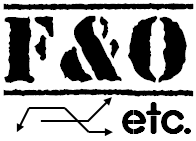|
|
In this article, we'll cover layman's approach to understanding the logic and reasoning behind the Black–Scholes Options Model. We also cover the underlying assumptions for Black–Scholes Model and see how the same model can be extended to price different financial assets.
Let's start with the basics. We all know that Black–Scholes Model was developed for options pricing. The problem with options is that they are a bit different product - for e.g. a call option will give you returns only if the underlying crosses a particualr price value called the strike price. The payoff will keep on increasing linearly after that.
The challenge that comes in - how do you price such a financial product? Black–Scholes Model has its roots in it. Let's see how:
Black–Scholes Model Example
For e.g., assume Microsoft stock is trading currently at $25 per share and you buy a 1 year long call option on Microsoft with the strike price of $25. Plain and simple - you believe that Microsoft stock price will go higher and higher from current levels of $25 in one year time and hence you attempt to benefit from that belief by buying a call option at the same strike price.The question arises - what price should you pay for such an option and how to determine that price?
There are few things involved here:
1. the probability that Microsoft stock will actually move higher than $25
2. the probability that if it moves higher, how high will it go?
3. the time value of money for the one year timeframe (time to option expiry)
For the first two points, you need to basically arrive at a prediction about future price of Microsoft in one year timeframe, and that prediction needs to be made today because you are going to purchase this option today. Hence, we need a quantitative measure to quantify that probability of Microsoft price movement.
The way to do it is simple (and that's what is used by the Black–Scholes Model) - you look at the average price movement of Microsoft stock over a period of time (say 1 year) and then arrive at an average value about how much the stock price can move in one year time frame.
This is called "Expected Value" calculations. Suppose that historical price data of Microsoft tells us that it moved -10% twenty percent of times, moved +10% thirty percent of times, +15% twenty five percent of times, +20% twenty percent of times, and +25% five percent of times.
Hence the weighted average (or Expected Value) will come to:
(-10%*20% + 10%*30% + 15%*25% + 20%*20% + 25%*5%)/100% = 10%
i.e. on an average, the price of Microsoft stock is expected to move +10% in one year time frame.
So now, we have arrived at a quantified value of the probability of the underlying stock price movement. This calcualtion is based upon the historical prices and covers the first two points.
In Black Scholes model, the same concept of probability is used under the name of "volatility". It attempts to take this average value for price movements in the name of "volatility" and factors in this probability of all possible price movements.
For the third point - time value of money - think about it from the point of view of a bank offering a loan.
Money today has more value than money tomorrow. Why? Because if I have 100 bucks today, I can put it in a bank deposit and get say 5% interest and after a year I will have 105 bucks.
Continue to Next Part Black Scholes Option Pricing Formula Explained

0 Comments: Post your Comments
Wish you all profitable derivatives trading and investing activities with safety! = = Post a Comment